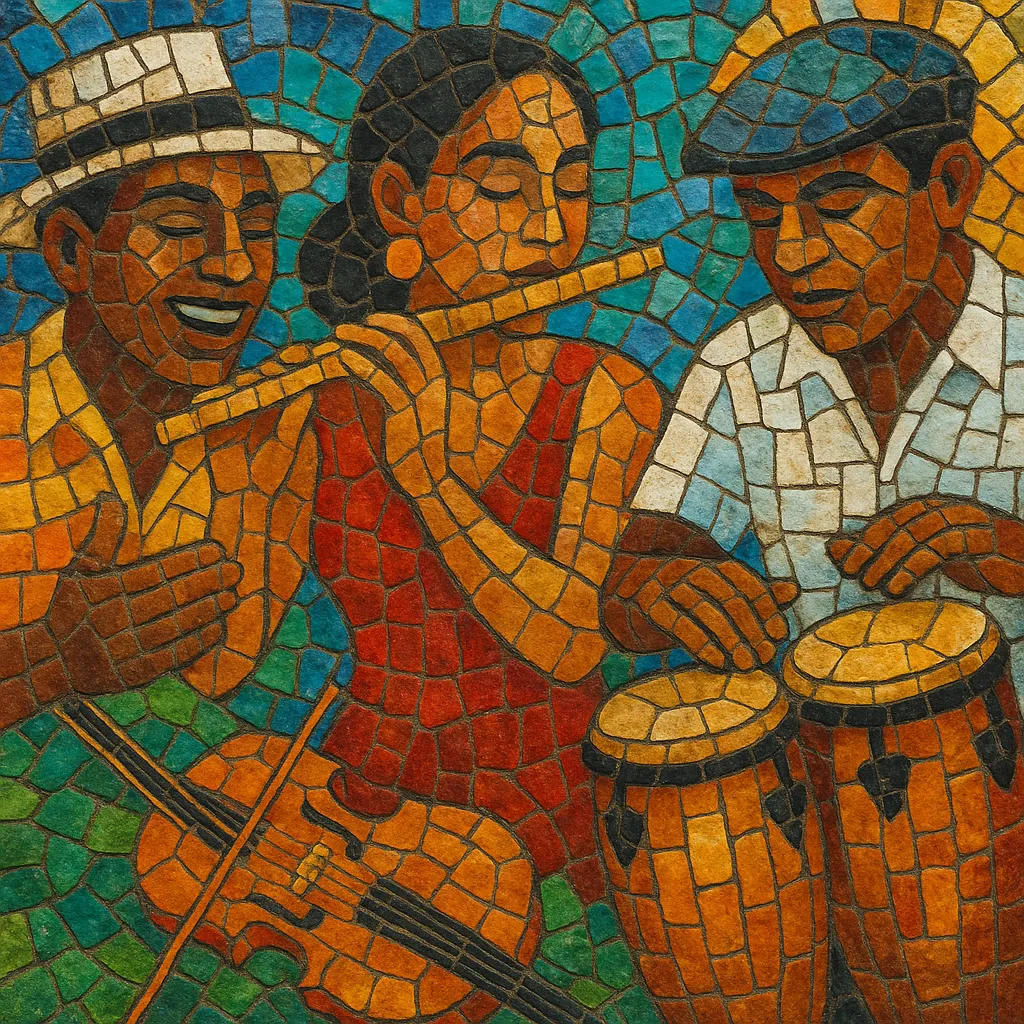Pachanga is a Cuban dance‑music style that emerged at the turn of the 1960s from the island’s charanga tradition. It is characterized by a buoyant, playful feel; bright flute leads; staccato violin riffs; and a driving yet light rhythm section built on son clave and cha‑cha‑adjacent percussion patterns.
Performances typically feature call‑and‑response coros, a montuno section with vamping piano and bass tumbao, and tightly arranged “mambo” string figures that spur dancers. The mood is festive and humorous—its very name became a slang word for “party”—and the tempo usually sits in a lively medium‑fast range ideal for social dancing.
Pachanga arose within Cuba’s charanga scene—ensembles centered on flute, violins, and a light percussion/piano/bass rhythm section—at the end of the 1950s. Songwriter Eduardo Davidson is often credited with catalyzing the style around 1959, and early charangas such as Orquesta Sensación and Orquesta Sublime helped shape and popularize its sound. Musically, pachanga drew on danzón’s elegant charanga format, cha‑cha‑chá’s accessible dance pulse, mambo’s riff‑driven excitement, and son montuno’s call‑and‑response and montuno vamps.
The style crossed to New York City at the dawn of the 1960s and triggered a short but intense dance craze in ballrooms and on Latin radio. Bandleader‑flautist Johnny Pacheco became the most visible ambassador, scoring hits with charanga orchestras that foregrounded pachanga’s catchy coros, sparkling flute lines, and string mambos. Labels such as Alegre documented the scene, while artists including Charlie Palmieri and Joe Quijano brought the sound to mainstream Latin dance floors.
By the mid‑1960s, pachanga’s prominence waned as New York’s Latin scene shifted toward boogaloo and, soon after, salsa. Even so, pachanga’s charanga instrumentation, rhythmic feel, and repertoire fed directly into these later movements. The style remains a staple in charanga sets worldwide, a beloved retro dance on social floors, and a key bridge between mid‑century Cuban dance forms and the pan‑Latin salsa era.
Use a classic charanga setup: one wooden (or silver) transverse flute, a section of 2–4 violins, piano, baby bass or upright/electric bass, timbales (with bells), güiro, and conga(s). Keep the texture light, letting flute and violins carry hooks, with the rhythm section providing an agile, danceable foundation.
Anchor the music to the son clave (often 2–3, though 3–2 works if consistent). Set a lively medium‑fast tempo—roughly 120–140 BPM. The güiro provides constant brushed quavers; congas play a cha‑cha‑like marcha; timbales alternate cáscara on the shell with bell patterns in the montuno and “mambo” sections. Aim for a buoyant, slightly bouncing feel that invites quick, playful footwork.
Favor bright major keys and diatonic progressions (I–IV–V, ii–V–I), saving chromaticism for passing lines. Structure tunes with: an intro hook; verse/coro; a montuno vamp where piano guajeos and bass tumbao lock in; string “mambo” riffs for lift; flute solos or traded riffs with violins; and a shout‑chorus ending. Keep sections concise to sustain dance‑floor momentum.
Write memorable coros with simple, catchy lyrics, often playful or party‑themed. Give the flute clear, singable lead lines with embellishments and short improvised breaks. Score violins in tight, rhythmic unison or simple harmonies for percussive stabs and cascades (“mambos”). The piano montuno should interlock with the bass, leaving space for percussion.
Prioritize clarity and punch: mic the flute for presence, keep strings crisp rather than lush, and let the güiro and bells cut through the mix. On stage, use call‑and‑response to energize dancers, and shape dynamics so each return to the coro or mambo section feels like a lift.


